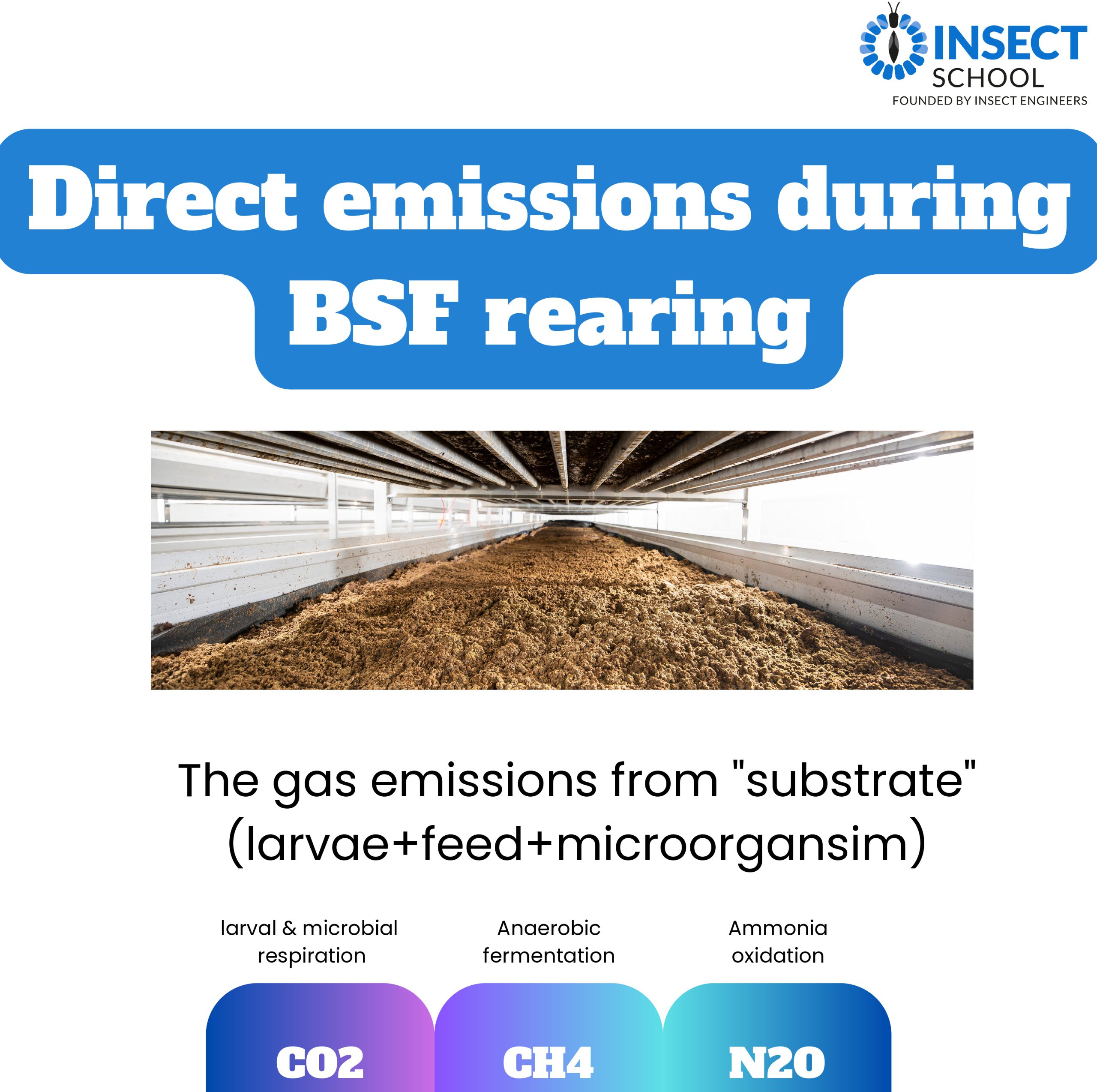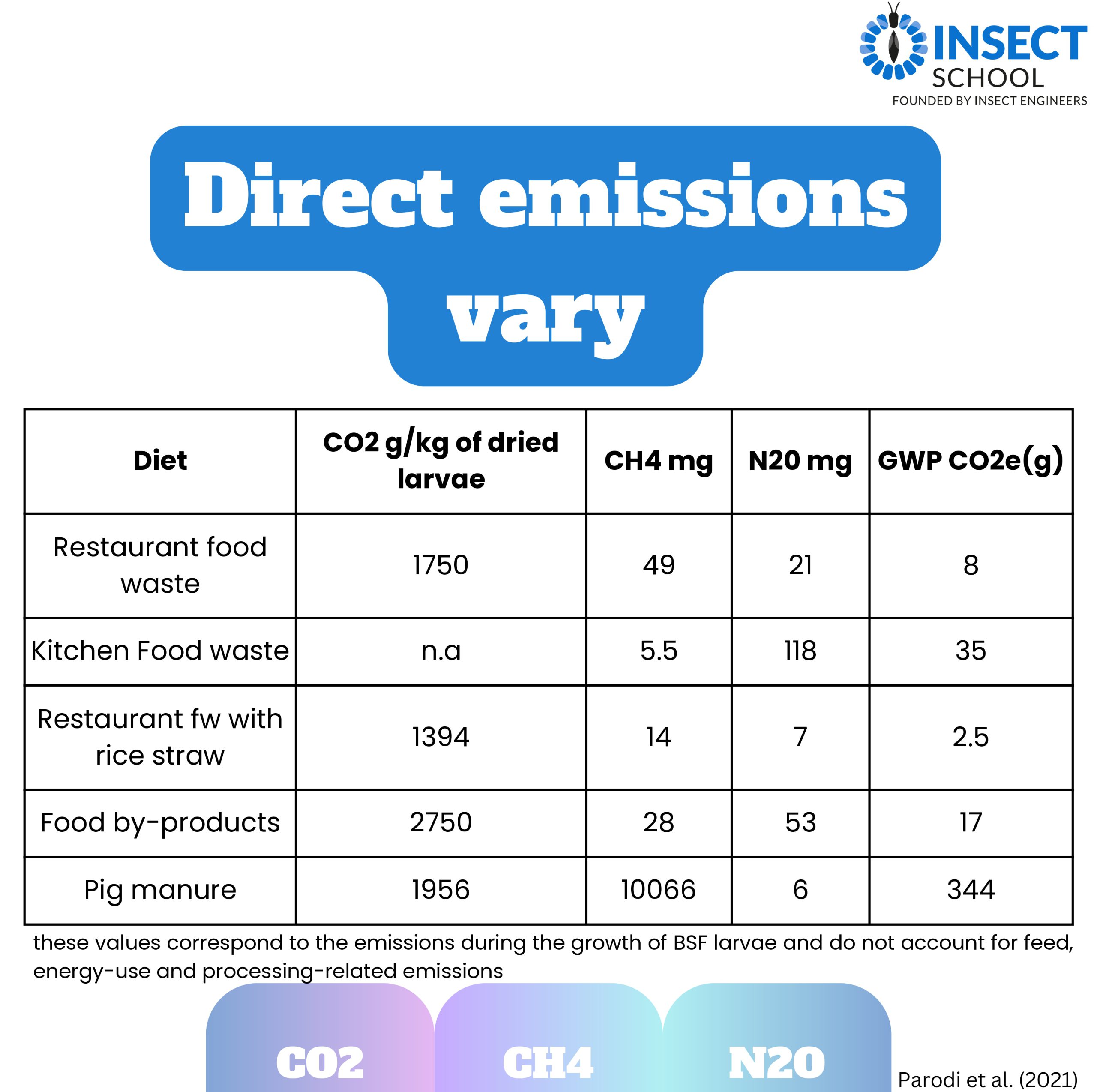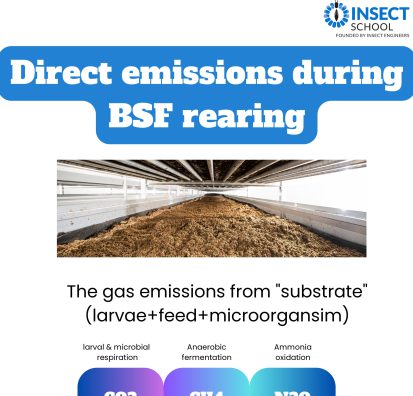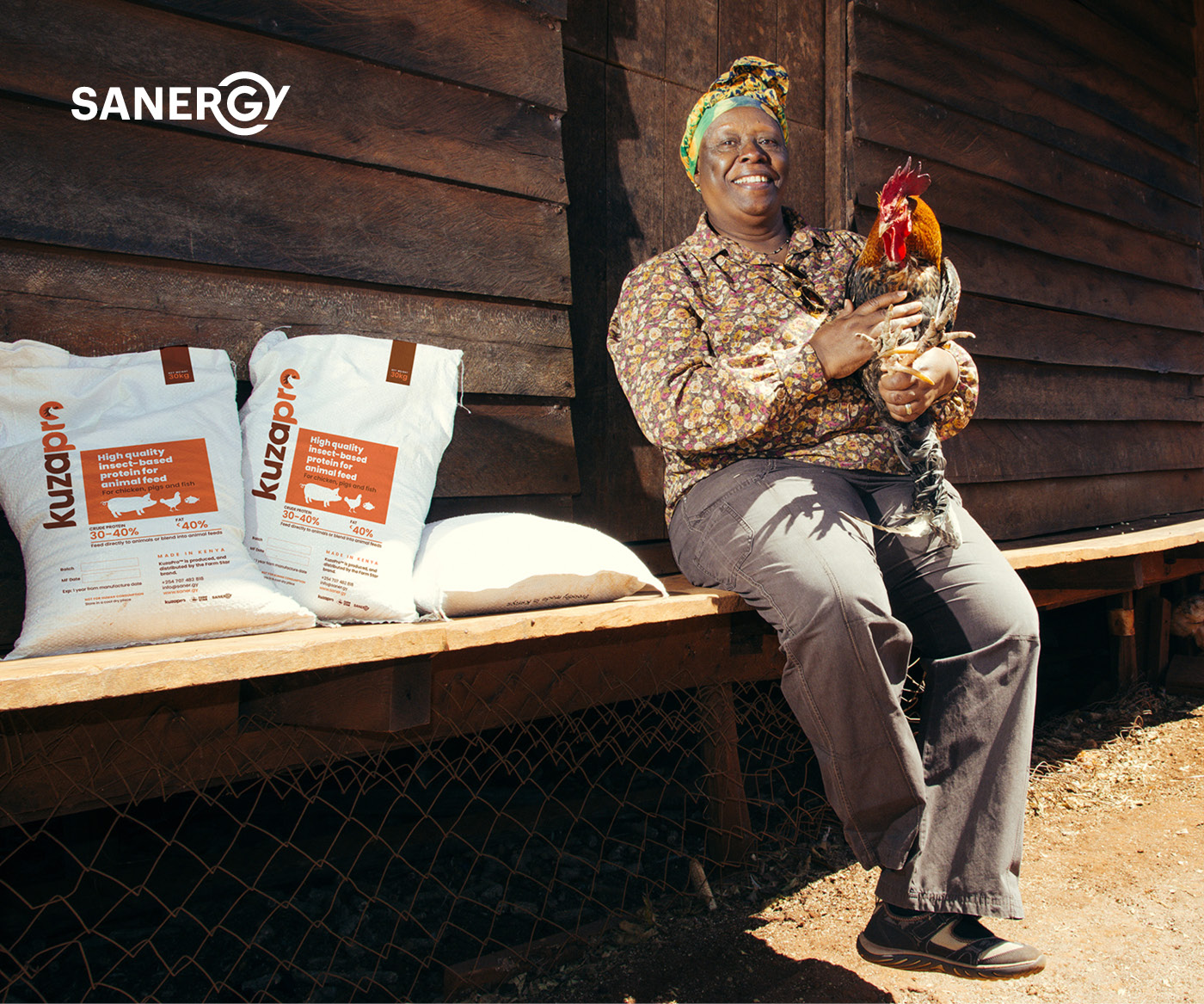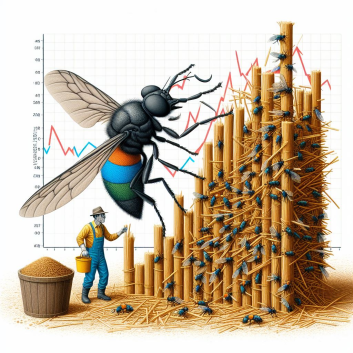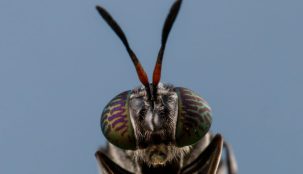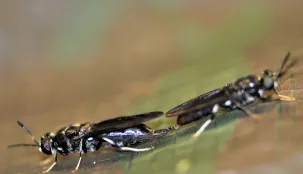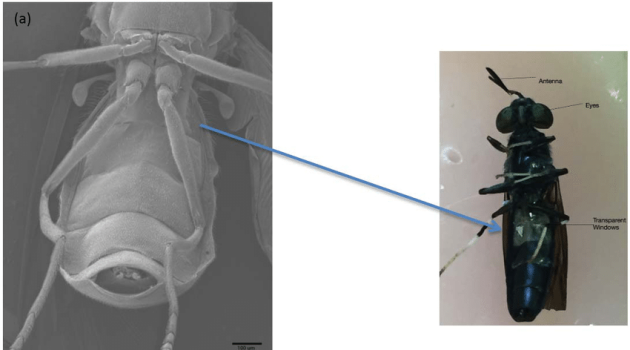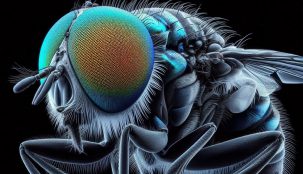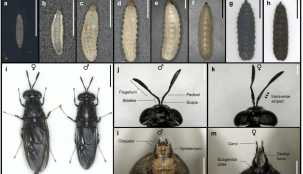Direct gaseous (CO2, CH4, N2O) emissions during the rearing of BSF larvae.
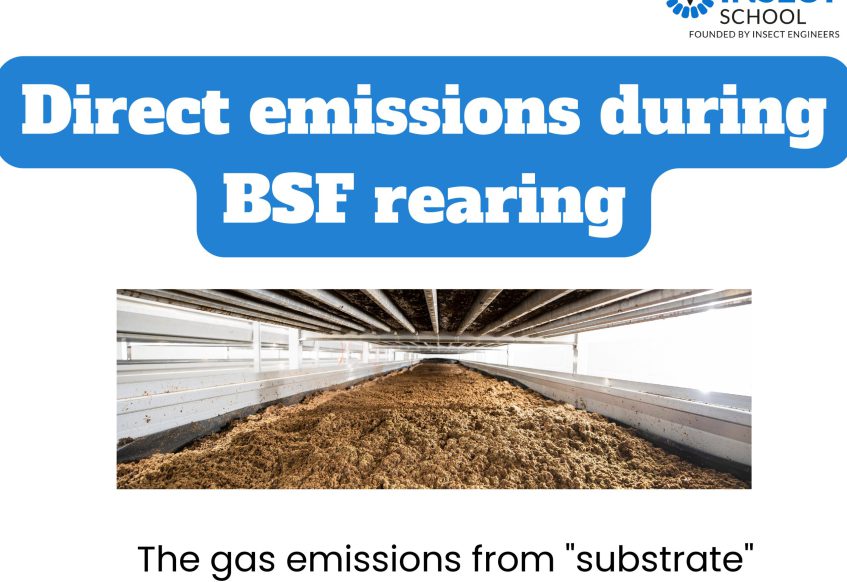
CO2 emissions take place as both microbial and larval respiration occur. Microbial respiration has been reported to account for 30% of total CO2 emissions. The CO2 emissions per kg of dried larvae vary with type of diet, larval density, age of starter larvae, as well as gas sampling frequency (e.g., daily basis or once every week).
CH4 emissions are mainly linked to microbial anaerobic activity. CH4 emissions can decrease with aeration (forced or natural larval movement). CH4 emissions are much higher when larvae are reared on pig manure than other residues. The reason behind is the high moisture content of pig manure (e.g., 76% water content) contributing to anaerobic fermentation.
N2O emissions occur when nitrogen-containing compounds, e.g., ammonia, are in the presence of oxygen and moisture through microbial activity.
